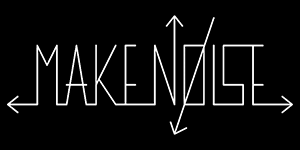
A fairly young American brand began distributing its products in 2009-2010 in the city of Asheville, North Carolina. Tony Rolando - a self-taught engineer – became the founder of the brand. The first time he came across Doepfer synthesizer in some music club, he could not remain indifferent and soon fell for modular synths. Tony Rolando was lucky enough to become the owner of the Doepfer system - one of the music store’s customers (where Tony worked), left his instrument there because no longer needed it. Having studied the loads of technical literature and got into developing some small musical stuff the future founder of Make Noise got a job at Moog where he continued to explore the synthesizers he liked so much. Thanks to a friend, Kelly Kelbel, who used to motivate Tony to create his company, we were finally introduced to functional analog equipment with outstanding capabilities. Make Noise emphasize the uniqueness of their instruments - creating them together with musicians they “trapped” voices between notes and tried to find a completely new sound. The developers consider their instruments to be truly experimental, and therefore able to change the perception of sound and attitude to music.
As we’ve already mentioned, the company's instruments are multifunctional, they include a large number of patch cables while keeping low cost. Analog modules made by Make Noise are in Eurorack format according to the generally accepted standards. Thus any module or synthesizer of the company is compatible with other Eurorack format instruments.
0-COAST model (2016) is a single-voice synthesizer that includes VCO, a CV/Gate input-output, a high-quality dual-mode arpeggiator and a rugged steel housing. The instrument uses classical methods of sound synthesis providing optional work with patch cables. A large number of cables allow you to experiment with the sound of the instrument, thanks to the opportunity to group and regroup the cables any way a musician’s soul asks for. Nevertheless, the necessary patching was carried out at the factory making 0-Coast serve first of all as a decent, expressive monosynth. Using the MIDI controller you can apply new timbres to existing musical forms. However, 0-Coast will have you tangled and confused with the very capabilities of analog sidebands generated by FM, as well as harmonics flowing around monolithic hum which won’t remind you of any voice you’ve heard before. The instrument took sound synthesis techniques from two well-known brands (Moog and Buchla) which made it an all-purpose unit indeed. The synth name proves it: Moog and Buchla represent the East Coast and West Coast while Make Noise didn’t want to emphasize the cultural geolocation giving preference to one of the USA coasts and put a symbolic "0".
Tony Rolando, the founder of the brand, considers CV Bus Shared System instrument his favorite development. Shared System included 9 modules and is housed in a special portable wooden case with rubber feet and a handle which simplifies the transportation of the instrument considerably and is great for musicians on tour. CV Bus Shared System has become the most multifunctional and complex of all brand instruments since it combines all sound synthesis methods: from analog FM to voltage-controlled granularization. Visual indication facilitated the process of mastering the instrument immensely: the level, the rate and the polarity for the 4 possible signals constituting the patch are displayed. These 4 control signals are color coded and rooted deep into the center of the system being evenly “distributed” which contributes to fast, error-free and intuitive patching. The system included modules: Maths (a dual-mode oscillator with the shift and mix function (2009)), ModDemix (with a dual ring modulator and VCO), DPO (with dual VCO for complex waveforms), Optomix (double Lowpass Gate with mixing function), Echophon (with Pitch Shifting and Echo function), Wogglebug (random voltage generator (2009)), Pressure Points (modular controller (2010)), René (sequencer (2010)) and Phonogene (DSP and sequencer). Later the Shared System was reworked into the Black & Gold Shared System with the addition of a new Erbe-Verb module featuring the set of reverb algorithms and new presets. CV Bus meets the world making acquaintance with external gear via 1/4" mono input, mini input jacks, TRS Stereo 1/4" output, high-quality Stereo Line Driver converts a powerful modular signal into the familiar Line Level, there’s also a Master Volume control.
The year 2015 was marked by the emergence of System Concrète. A small instrument is based on the concept of creating new sounds from "captured" external signals by their processing. The Phonogene module is the core of System Concrète and acts as a recording device which also allows the musician to work with sound layers, alter the sound and control the playback speed. The Echophon module allows you to change the pitch with the Echo function enabled and in combination with the MMG filter it can incredibly expand the spectrum. Wogglebug and MATHS are designed to revive these effects.
The Cartesian system released in 2016 included only the most desired synthesizers from Make Noise featuring all in one: René, Wogglebug, Maths, STO, a three-voice Telharmonic module. The instrument sports several types of sound synthesis: subtractive, additive, FM, phase, ring and amplitude modulation with the possibility of their simultaneous operating. Cartesian also included a built-in power supply and, thanks to an intuitive interface and low price, it is suitable even for beginners willing to enter the world of modular synthesis. Such affability and indulgence gives an exceptionally positive result - even if the user hardly understands what he’s doing the sound that he eventually gets proves the correctness of any of his moves.
The positive approach of Make Noise engineers allowed them to create rather unusual instruments for the unconventional musicians who "play notes between notes". The brand instruments have been recognized as conductor of new analog aesthetics.

